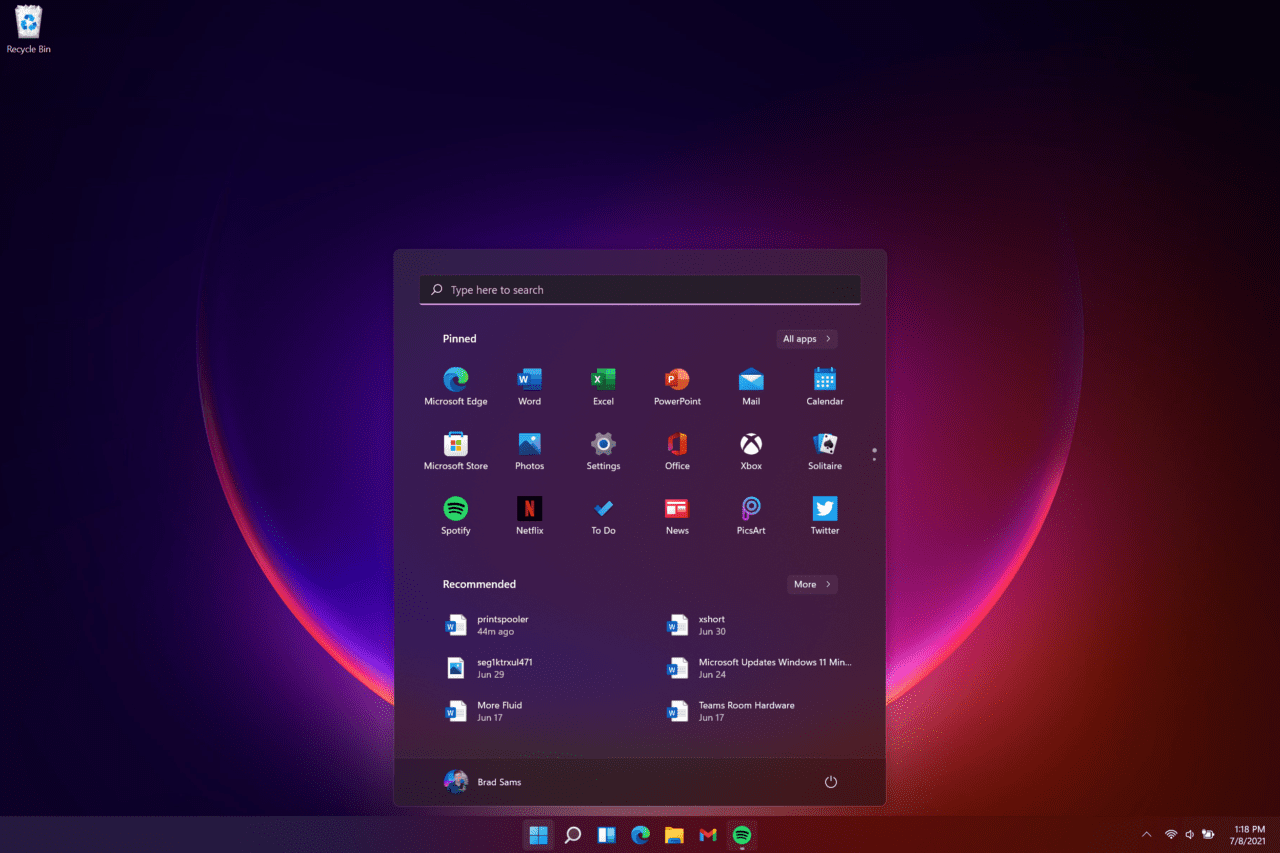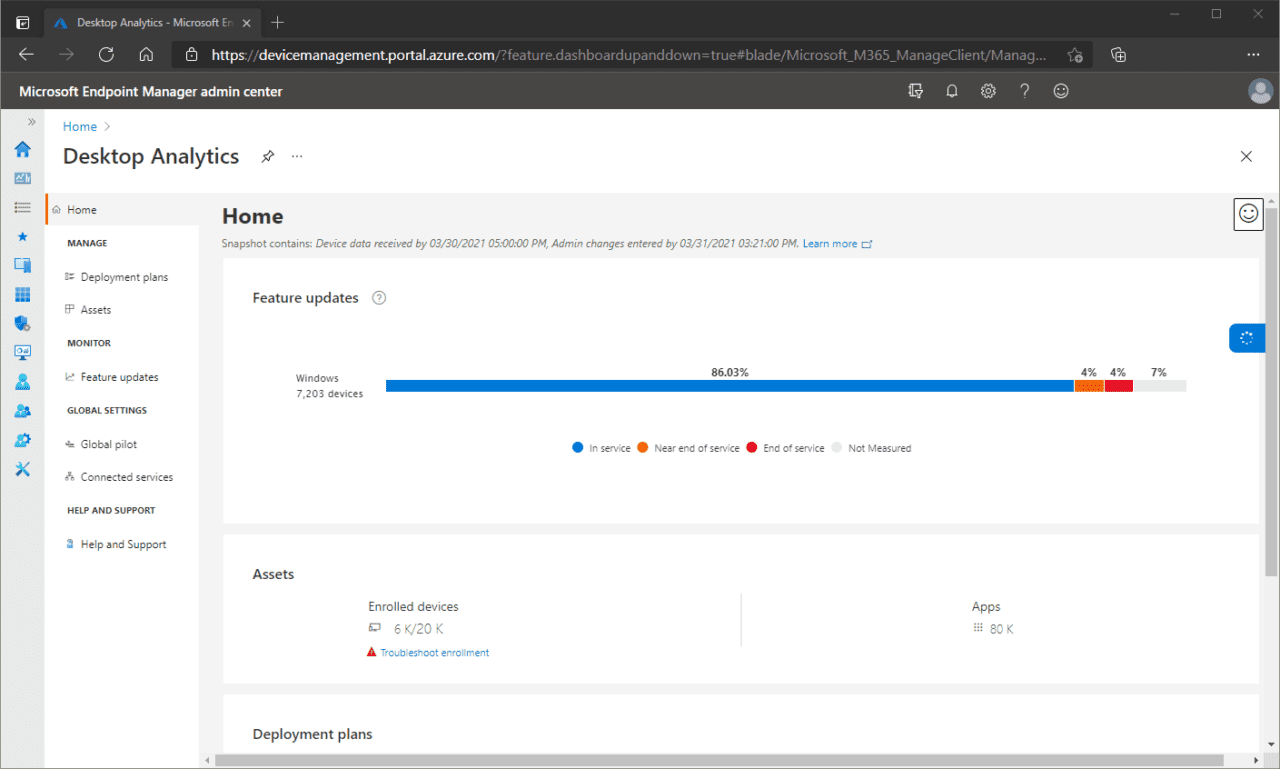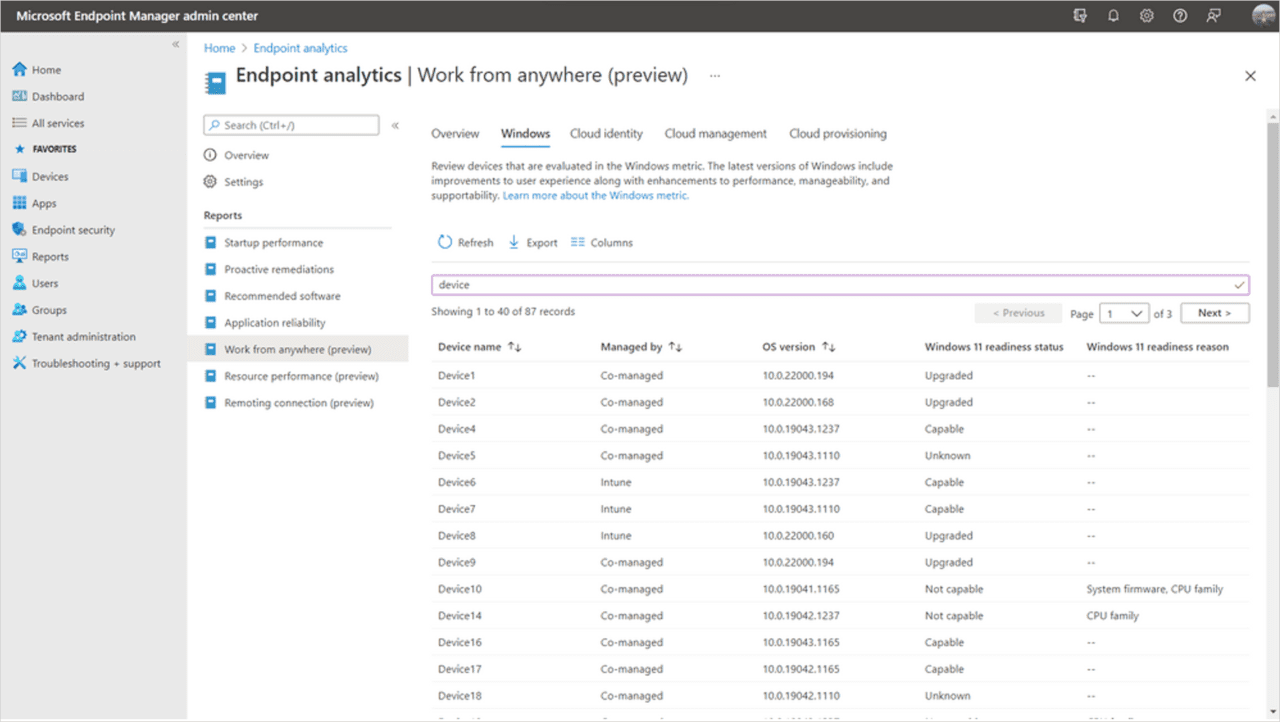Microsoft Retiring Desktop Analytics in 2022
November 30th, 2022 will see Microsoft end availability for its Desktop Analytics solution. Microsoft said in a blog post dated November 5th:
“To align our investments with this goal and the shift we have been seeing, we are announcing that we will retire Desktop Analytics on November 30, 2022. Over the next year, we will begin incorporating the types of insights found in Desktop Analytics directly into the Microsoft Endpoint Manager admin center, making them available for PCs that are managed via Intune-only, co-managed, and Configuration Manager with tenant attach.”
Desktop Analytics is a cloud-based solution that organizations can use to determine whether remote endpoints are ready to update to either the next version of Windows or a feature update. It uses insight and intelligence provided by the OS to determine device readiness.
Using data collected from millions of Windows PCs, and devices in your organization, Desktop Analytics creates an inventory of apps running across PCs, assesses application compatibility with the latest Windows feature updates, suggests mitigations for identified compatibility issues, and much more.
Windows 11 endpoint analytics
Microsoft says that it has already started incorporating features from Desktop Analytics into Microsoft Endpoint Manager (MEM) as part of the recent Windows 11 release. Organizations can use MEM to understand whether managed PCs meet the necessary system requirements for Windows 11. This helps companies determine which PCs can migrate as hardware issues are the top reason for blocking upgrades from Windows 10.
Hardware readiness insights are now part of Endpoint analytics in Microsoft Endpoint Manager. Organizations can use the insights to quickly understand which managed devices can be upgraded to Windows 11. The analytics are available for devices managed by Intune, co-managed devices, and Configuration Manager (ConfigMgr) devices where tenant attach is enabled.
What is tenant attach?
Tenant attach lets you connect a Configuration Manager site to Microsoft Intune so that you can get access to information about your on-premises devices in the cloud console. It lets you upload Configuration Manager devices to the cloud service and then take actions under the Devices panel in the cloud console.
Microsoft Endpoint Manager reports
Over the coming months, Microsoft will be adding device-level upgrade and update readiness information to the Reports node in MEM. The new reports let you know if any devices have application or driver compatibility issues, or Safeguard holds, that will stop them being upgraded to Windows 11 or being updated to a new feature update.
The reports will show organizations the top compatibility risks across all devices so you can decide which issues to address first and get as many devices upgraded as possible.
What is a Safeguard hold?
A Safeguard hold is a mechanism Microsoft uses to block updates being deployed to devices that have hardware, software, or device drivers installed that are incompatible with a Windows upgrade or update. Safeguard holds allow Microsoft to block updates that might be problematic on devices, ensuring that the user experience isn’t affected until problems with an update can be resolved but while still rolling out the patch to a wide set of devices.
Data-driven approach to managing devices
One of the key changes in the move from Desktop Analytics to MEM is the way in which data is presented. Instead of using a workflow-based approach, MEM uses a data-first approach. This change has been made based on feedback provided by IT pros. Endpoint analytics in MEM makes compatibility insights simpler and more accessible for system administrators.
Cloud attach will get easier
The new approach to Endpoint analytics has allowed Microsoft to simplify setup by using the same configuration for analytics and tenant attach. Previously, Desktop Analytics had a separate setup process from tenant attach.
How to prepare for Endpoint analytics in MEM?
If your organization would like to benefit from Endpoint analytics, you’ll need to enable tenant attach and integrate your site with Azure Active Directory (AAD). This will provide access to the cloud console immediately and as they become available, upgrade and update readiness insights.






